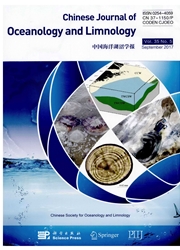

 中文摘要:
中文摘要:
macrozoobenthos 上的生态的研究在云南贵州高原在二个小高原湖被进行,西南中国:克辛吉温·莱克(XL ) ,其主要生产的主要来源是浮游植物的一个发育营养正常促进剂湖(Chl a=99.76 ± 2 4.01 μg/L ) ,并且扬宗·莱克(YL ) ,一个中央营养的湖。采样从 2002 年 10 月被执行到 2004 年 5 月。总的来说 23 benthic 税一在 XL 和 21 税被识别一在里面 YL。在 XL 的底生生物的密度在 YL,而是生物资源是比那低得多的关于在二个湖的平等者,在 YL 在 XL 和 4 249 ind/m 2 和 8.60 g/m 2 是 1 423 ind/m 2 和 8.71 g/m 2 。主导的种类是 Limnodrilus hoffmeisteri, Branchiura sowerbyi, Aulodrilus pluriseta 和 Chironomus sp。在 XL 和 Limnodrilus hoffmeisteri, Aulodrilus pluriseta 和 Bellamya sp。在 YL。季节的变化发生了,显示出在夏天和冬季的更富有的种类,但是密度和生物资源在二个湖以不同方法变化了。功能的喂的组上的分析显示 collector-gatherers 是占优势的,但是相对许多另外的组不同。逐步的多重回归分析证明水深度,传导性和叶绿素一是在湖影响 macrozoobenthic 丰富的关键因素。
 英文摘要:
英文摘要:
Ecological studies on macrozoobenthos were conducted in two small plateau lakes in the Yunnan-Guizhou Plateau, Southwest China: Xingyun Lake (XL), a eutrophic lake whose main source of primary production was phytoplankton (Chl α=99.76±24.01 μg/L), and Yangzong Lake (YL), a mesotrophic lake. Sampling was carried out from October 2002 to May 2004. Altogether 23 benthic taxa were identified in XL and 21 taxa in YL. The density of benthos in XL was much lower than that in YL, but the biomass was about equal in the two lakes, being I 423 ind/m^2 and 8.71 g/m^2 in XL and 4 249 ind/m^2 and 8.60 g/m^2 in YL. The dominant species were Limnodrilus hoffmeisteri, Branchiura sowerbyi, Aulodrilus pluriseta and Chironomus sp. in XL and Limnodrilus hoffrneisteri, Aulodrilus pluriseta and Bellamya sp. in YL. Seasonal fluctuation occurred, showing richer species in summer and winter, but the density and biomass varied in different ways in the two lakes. Analyses on functional feeding groups indicate that collector-gatherers were predominant, but the relative abundances of other groups were different. Stepwise multiple regression analysis demonstrated that the water depth, conductivity and chlorophyll a were the key factors affecting macrozoobenthic abundance in the lakes.
 同期刊论文项目
同期刊论文项目
 同项目期刊论文
同项目期刊论文
 期刊信息
期刊信息
